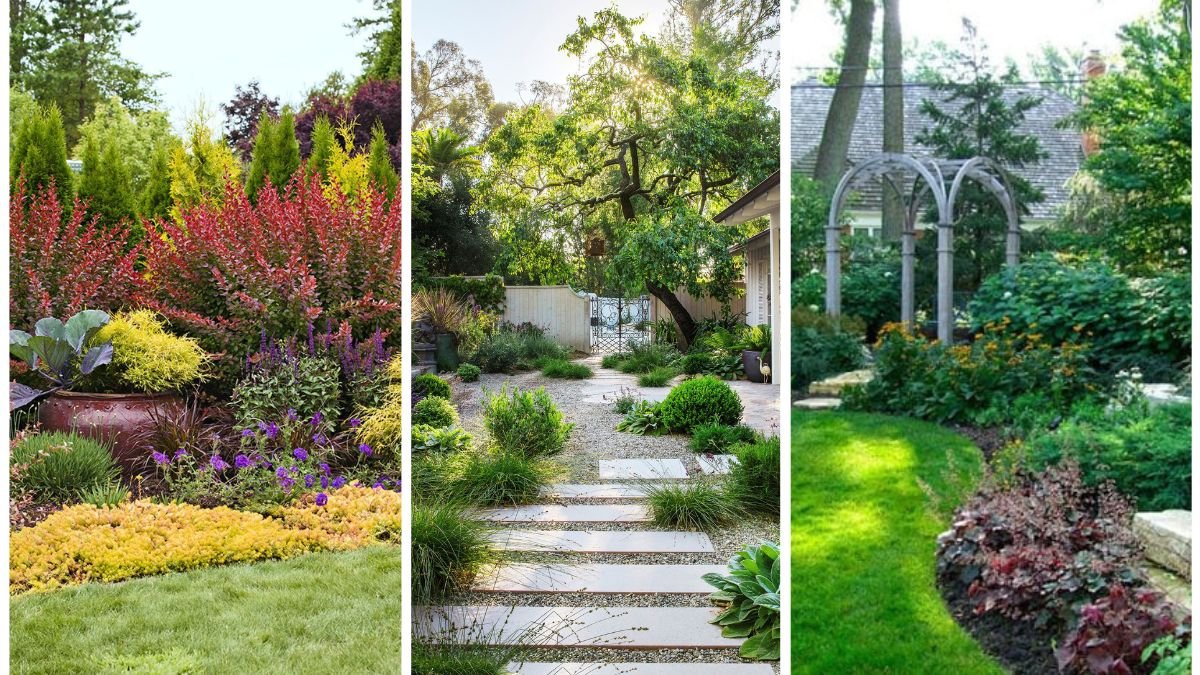A successful garden design does more than simply fill space with plants—it creates a dynamic, engaging environment that captures attention, evokes emotions, and offers a sense of harmony. Two key design principles that transform ordinary gardens into extraordinary landscapes are texture and depth. While color grabs the eye, texture and depth create layers, contrast, and movement that make a garden feel more immersive and visually appealing. This article explores practical strategies for adding texture and depth to your garden design, offering expert tips, plant choices, and structural ideas for creating a multidimensional outdoor space.
1. Understanding Texture in Garden Design
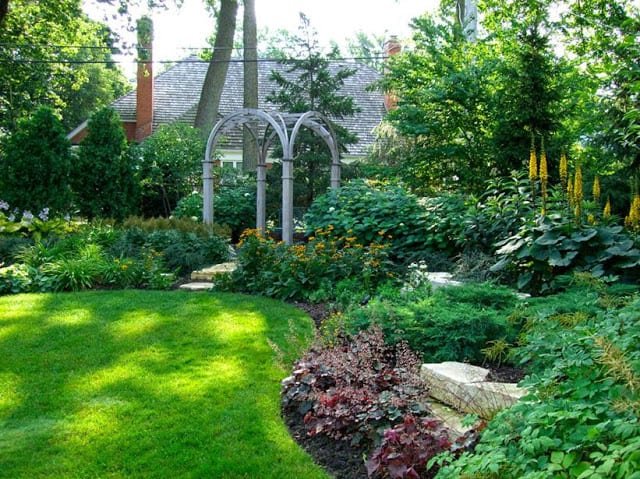
Texture refers to the surface quality or visual “feel” of plants and garden elements. It can be coarse, fine, soft, rough, smooth, or glossy, and the interplay of textures adds complexity and interest to the landscape.
Types of Texture
- Foliage Texture: The shape and size of leaves, such as large broad leaves (like hosta or rhubarb) versus fine, feathery leaves (like ferns or ornamental grasses).
- Flower Texture: Petal shapes and arrangements also contribute. Consider the ruffled petals of hydrangeas versus the spiky blooms of coneflowers.
- Hardscape Texture: Stone, brick, gravel, wood, and metal all have unique textures that contrast with plant materials, adding visual depth.
Tips for Using Texture
- Contrast: Pair coarse textures with fine textures for dynamic interest. For example, plant broad-leaved hostas in front of fine-textured ornamental grasses.
- Repetition: Repeating textures throughout the garden establishes cohesion and rhythm, guiding the eye naturally through the space.
- Seasonal Texture: Consider seasonal changes in foliage and blooms. Evergreens provide consistent texture year-round, while deciduous plants contribute seasonal variation.
Texture makes a garden feel alive, layered, and multidimensional, even in small spaces.
2. Creating Depth with Plant Layering
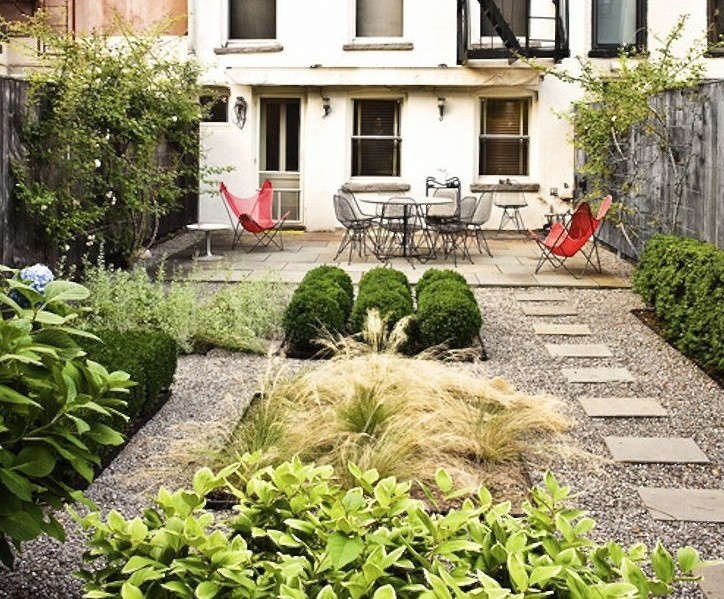
Depth in garden design is the illusion of three-dimensionality and distance. Proper layering of plants ensures that your garden feels spacious, balanced, and visually engaging.
Layering Techniques
- Height Variation: Place taller plants toward the back of beds and shorter plants in front. This creates a sense of progression and leads the eye naturally through the garden.
- Foreground, Midground, Background: Divide your garden into layers. For instance, low groundcovers in the foreground, medium shrubs or perennials in the midground, and tall trees or structural evergreens in the background.
- Staggered Planting: Avoid planting in straight lines; stagger plants to create a more natural, flowing look that enhances depth perception.
- Overlapping Forms: Let leaves, flowers, and grasses overlap slightly to create continuity and soften transitions between layers.
Benefits of Layering
- Makes compact gardens appear larger.
- Adds visual interest and natural movement.
- Enhances seasonal diversity and ensures year-round appeal.
Layering effectively transforms flat, one-dimensional garden beds into rich, immersive landscapes.
3. Incorporating Color and Shade for Depth
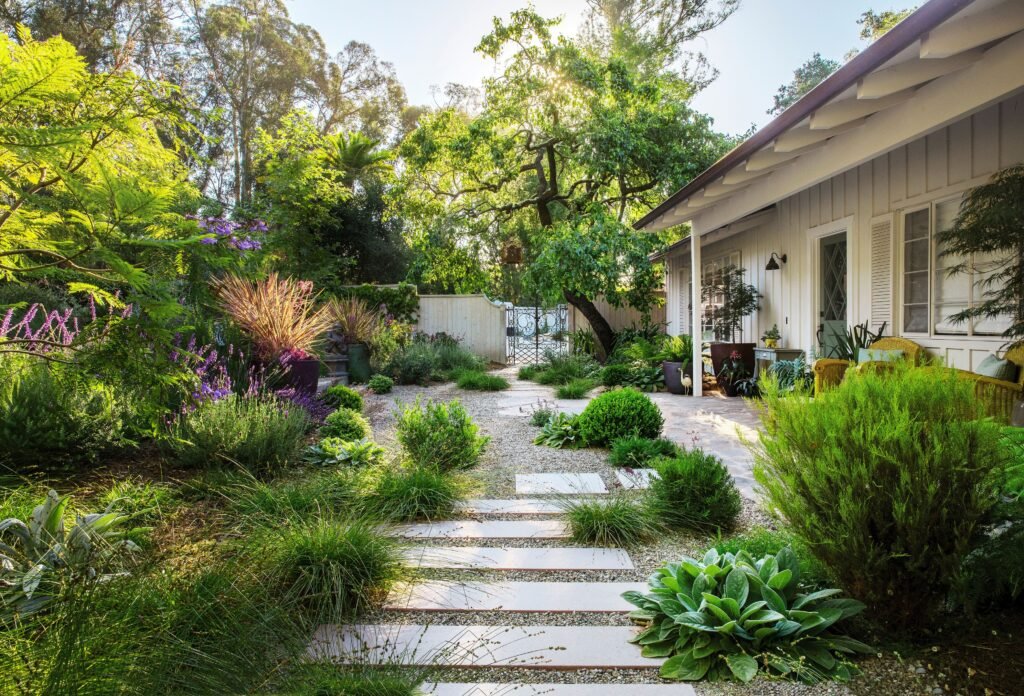
Color plays a vital role in creating perceived depth. Thoughtful use of color gradients and contrasts can make certain areas recede or advance visually.
Color Strategies
- Warm vs. Cool Colors: Warm tones (reds, oranges, yellows) advance visually, making features pop, while cool tones (blues, purples, greens) recede, creating a sense of distance. Use warm-colored flowers in the foreground and cooler tones in the background to enhance depth.
- Monochromatic Textures: Using a single color with varied textures can highlight leaf shapes, petals, and stems, enhancing depth without overwhelming the eye.
- Seasonal Color Planning: Consider changing foliage and bloom colors across seasons to maintain visual depth throughout the year.
Shade and Light
- Shadow Play: Plant placement can create natural shadows, which add layers and dimension to the garden.
- Sunlit Focal Points: Highlight key features or textural contrasts with sunlight or spotlights, especially in evening garden designs.
Color and shade are subtle but powerful tools for creating a multidimensional, immersive garden environment.
4. Using Hardscape Elements for Structure and Depth
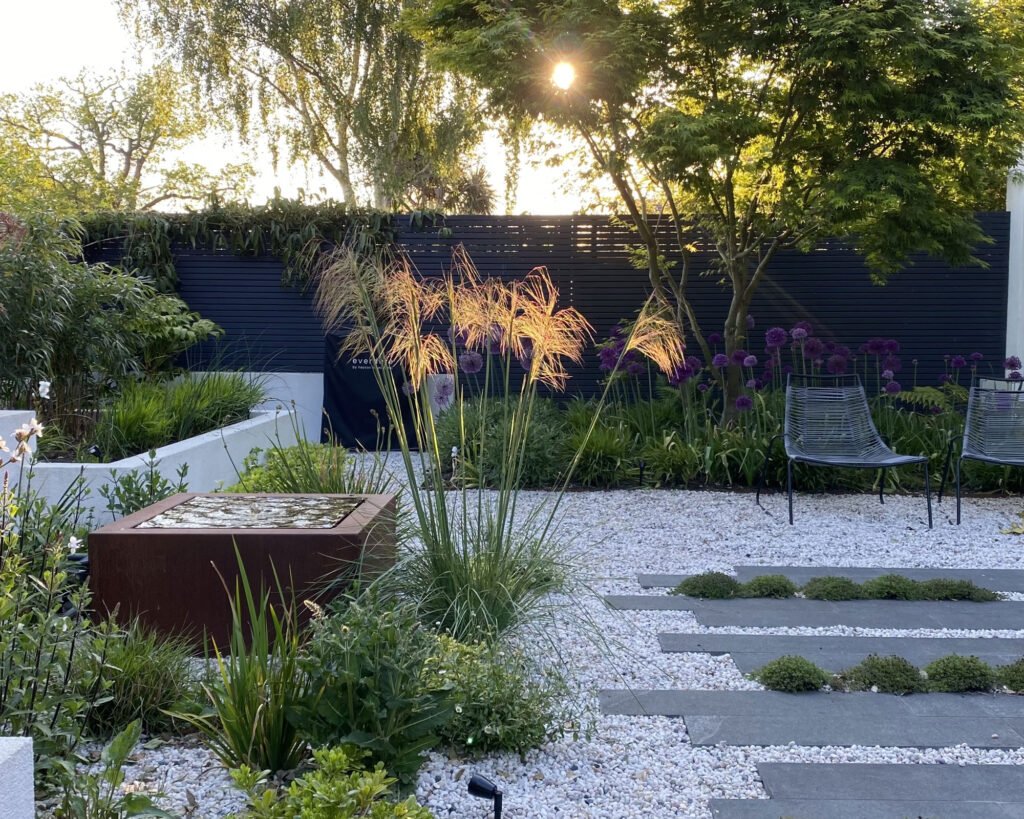
Hardscape elements—paths, walls, rocks, water features, and garden structures—play a critical role in adding depth and texture to outdoor spaces.
Paths and Walkways
- Curved paths guide the eye and create the illusion of distance, making the garden feel larger.
- Material choice—gravel, flagstone, or pavers—adds texture and contrast with plantings.
Vertical Structures
- Fences, Arbors, Trellises: Vertical elements add height and dimension, helping smaller gardens feel spacious.
- Raised Beds: Elevate planting areas to create multiple visual layers.
Water Features and Rocks
- Reflective surfaces like ponds or small fountains enhance visual depth.
- Strategically placed rocks or boulders create mid-ground and foreground interest, offering natural textural contrast.
Hardscape elements anchor the garden, create focal points, and amplify both texture and depth when used thoughtfully.
5. Combining Plant Types for Multi-Dimensional Appeal
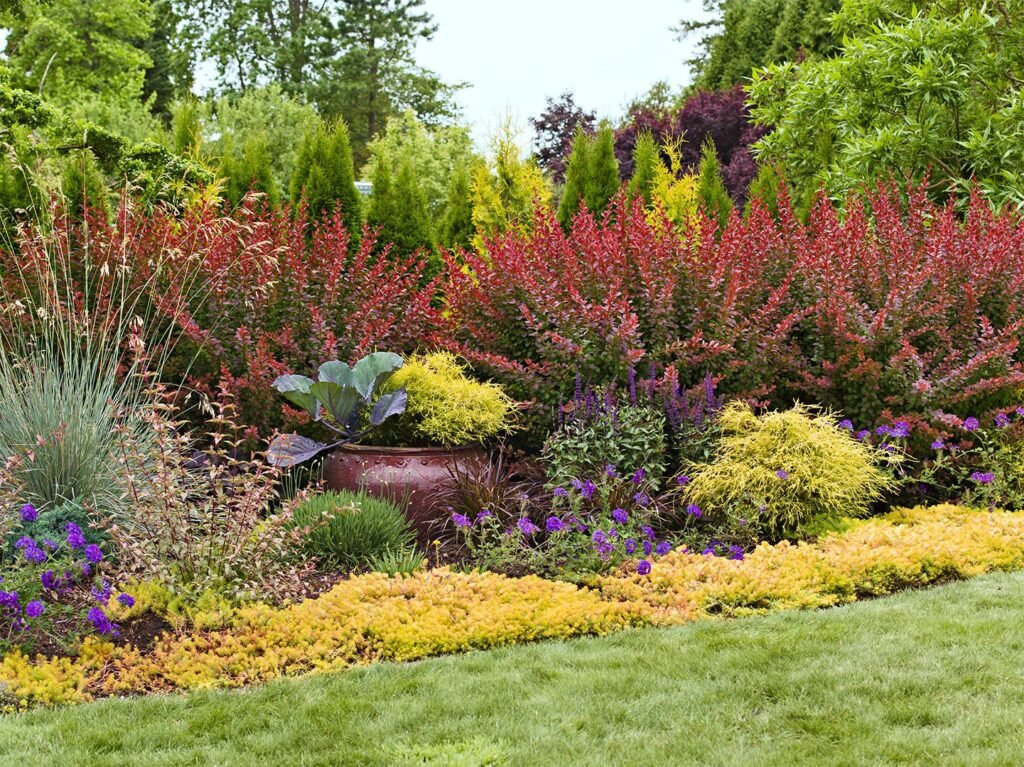
Diverse plant selections add texture and depth through variety in foliage, form, and bloom type.
Plant Combinations
- Evergreens + Perennials: Evergreens provide structural texture and year-round color, while perennials offer seasonal blooms and delicate textures.
- Ornamental Grasses: Their airy, flowing texture contrasts beautifully with dense shrubs or low-growing perennials.
- Vines and Climbing Plants: Utilize vertical space and soften hard edges, adding visual interest in multiple layers.
- Flowering Shrubs and Trees: Large blooms or bold foliage act as mid-ground focal points, enhancing depth when layered with smaller plants.
Additional Tips
- Mix textures: Broad leaves, fine leaves, spiky forms, and soft foliage all create visual complexity.
- Consider height: Combining groundcovers, mid-height shrubs, and tall perennials creates a dynamic, layered effect.
- Seasonal variety: Include plants that offer changing textures through buds, blooms, seed heads, or foliage color.
Thoughtful combinations of plant types ensure your garden has a multidimensional, ever-changing landscape that captivates year-round.
6. Integrating Lighting for Texture and Depth
Lighting is a transformative tool for emphasizing texture and creating depth, especially in evening or night-time garden use.
- Uplighting: Illuminate trees, shrubs, or vertical elements from below to create dramatic shadows and highlight textures.
- Pathway Lighting: Softly lights walkways, adding depth and guiding the eye through the garden.
- Accent Lighting: Focus on features such as textured walls, boulders, or water features to enhance dimensionality.
- Layered Lighting: Combine different light sources—ambient, task, and accent—to create a sense of multiple layers and depth.
Well-planned lighting extends the visual impact of texture and depth beyond daylight hours.
Conclusion
Texture and depth are fundamental elements that elevate any garden design from simple to extraordinary. By understanding how different textures—foliage, flowers, and hardscapes—interact and by strategically layering plants, colors, and structures, you can create a visually dynamic, immersive landscape. Incorporating vertical elements, diverse plant types, reflective surfaces, and thoughtful lighting further enhances the perception of space, making gardens feel larger, richer, and more engaging.
A garden that combines texture and depth offers year-round interest, encourages exploration, and evokes emotional connections through its layered beauty. Thoughtful application of these principles transforms ordinary gardens into vibrant, multidimensional outdoor spaces that captivate the senses and invite ongoing enjoyment.
